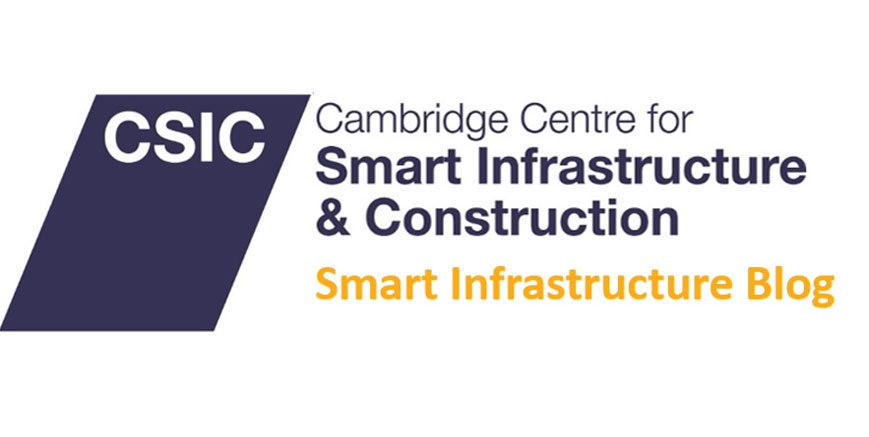May 2023
In this month's Smart Infrastructure Blog, CSIC Research Associate Viviana Angely Bastidas Melo discusses the growing need for urban systems that integrate social and technical domains. She argues that equipping city managers in both public and private organisations with multi- and inter-disciplinary competencies will help to achieve this.
Public and private organisations working on city-scale projects have taken advantage of digital technologies such as cloud computing, mobile apps, the Internet of Things, 5G infrastructure, and artificial intelligence to develop urban interventions. But many city managers and built environment professionals deal with significant challenges to steer digital innovation and achieve the expected social benefits (e.g. affordable housing, improved public safety, accessible public transportation, environmental sustainability, etc.). Conceptualising and designing urban systems that embrace both the social and technical worlds have become a critical planning and management responsibility that should put peoples’ needs above technical desires.
Design approaches for socio-technical systems consider human, social and organisational factors, as well as technical factors in the design of organisational systems. Such approaches lead to systems that are more acceptable to end users and deliver better value to stakeholders. However, many urban digital projects can often fail because they are predominantly focused on one aspect of the system, commonly technology, and neglect to understand and design the complex interdependencies that exist between socio-technical system ‘components’ such as people, strategies, policies, regulations, processes, data, applications, technology, and physical infrastructure.
Conceptualising and designing urban interventions from a socio-technical perspective requires city leaders to harness digital technologies responsibly while delivering social benefits. CSIC Research Associate Viviana Angely Bastidas Melo, Dep. of Engineering
Cities, as socio-technical systems, are required to create ‘public value’ and thereby achieve ‘socially desirable outcomes’ for all stakeholders including citizens and communities. This entails city professionals and planners working collaboratively to address complex urban problems and to achieve a common city vision across multiple sectors (energy, transport, water, housing, and the environment). But how can city professionals – who generally have different professional backgrounds – communicate between them and with other societal groups to represent and describe those socio-technical systems? How can they define and describe the concept of ‘public value’ and what exactly does the concept imply? Do they need a common language among city planners (policymakers, smart city managers, diversity experts) and technology implementers (IT architects, engineers, developers) to describe the different stakeholders’ concerns (e.g. residents’ data privacy, city service reliability, societal risks, etc)? The design of socio-technical systems using (architectural) meta-models and models can enable city professionals and managers to represent and describe those concerns and to connect city vision and strategies with the implementation of digital projects both in pilot experimentation and during the integration of those pilots in a wider urban environment.
Many digital innovation projects in the urban built environment are developing digital twins as a tool to address current problems (e.g. extreme weather events, carbon reduction, sea ice loss) by using ‘real-time’ data. The Climate Resilience Demonstrator, for instance, combines a description of assets from the energy, water, and telecom networks with data from flood simulations to resolve the effects on individual assets and the corresponding cascade effects across the combined network. But the design of urban socio-technical systems (e.g. city-scale digital twins) considers far more than data, technology, and infrastructure systems. In addition to achieving (urban infrastructure) data interoperability, we need to understand and design urban systems that help to achieve ‘interoperability between people’. We need to have a culture whereby city professionals and managers work together, which requires organisations to build trust around shared understanding as well as shared – and sometimes conflicting – goals. Rather than define urban digitalisation as an outcome, we need strong leadership to govern digital technologies through ethics and responsible innovation as a crucial aspect to create public value and mitigate social harms (e.g. inequality, exclusion and marginalisation). City managers and built environment professionals need to be equipped with the right set of competencies to address the right digital-city projects. They need to re-establish existing roles and competencies to be successful leaders who understand and drive both the social and technical aspects of urban digital innovations.
The Digital Cities for Change (DC2) project at CSIC, funded by The Ove Arup Foundation, has developed a Competency Framework by applying a socio-technical approach to plan and develop the competencies that city managers and built environment professionals need to lead responsible digital innovation. The framework involves aspects of digital, governance, and ethical and responsible innovation to develop innovations that provide efficient, equitable, democratic, and trusted city outcomes for communities. The framework also underpins a new executive education course and a new master-level educational programme in Leadership of Urban Digital Innovation for Public Value (LeadUP) at the University of Cambridge. The courses will equip city managers in both public and private organisations with multi- and inter-disciplinary competencies to drive place-based digital innovation and ensure public value creation. These educational programmes and courses are designed to equip current and future city leaders with competencies to understand, design and implement the next level of digital innovation with social coherence and responsibility.
The challenges for connected places and cities to deliver urban digital innovations are complex and multidisciplinary. Conceptualising and designing urban interventions from a socio-technical perspective requires city leaders to harness digital technologies responsibly while delivering social benefits. A common language can help city leaders to manage cities' complexity and to design digital solutions that align with their concerns and expectations. Such alignment can build a bridge between urban planning officers and digitalisation experts by making explicit the links between social and technological needs.

